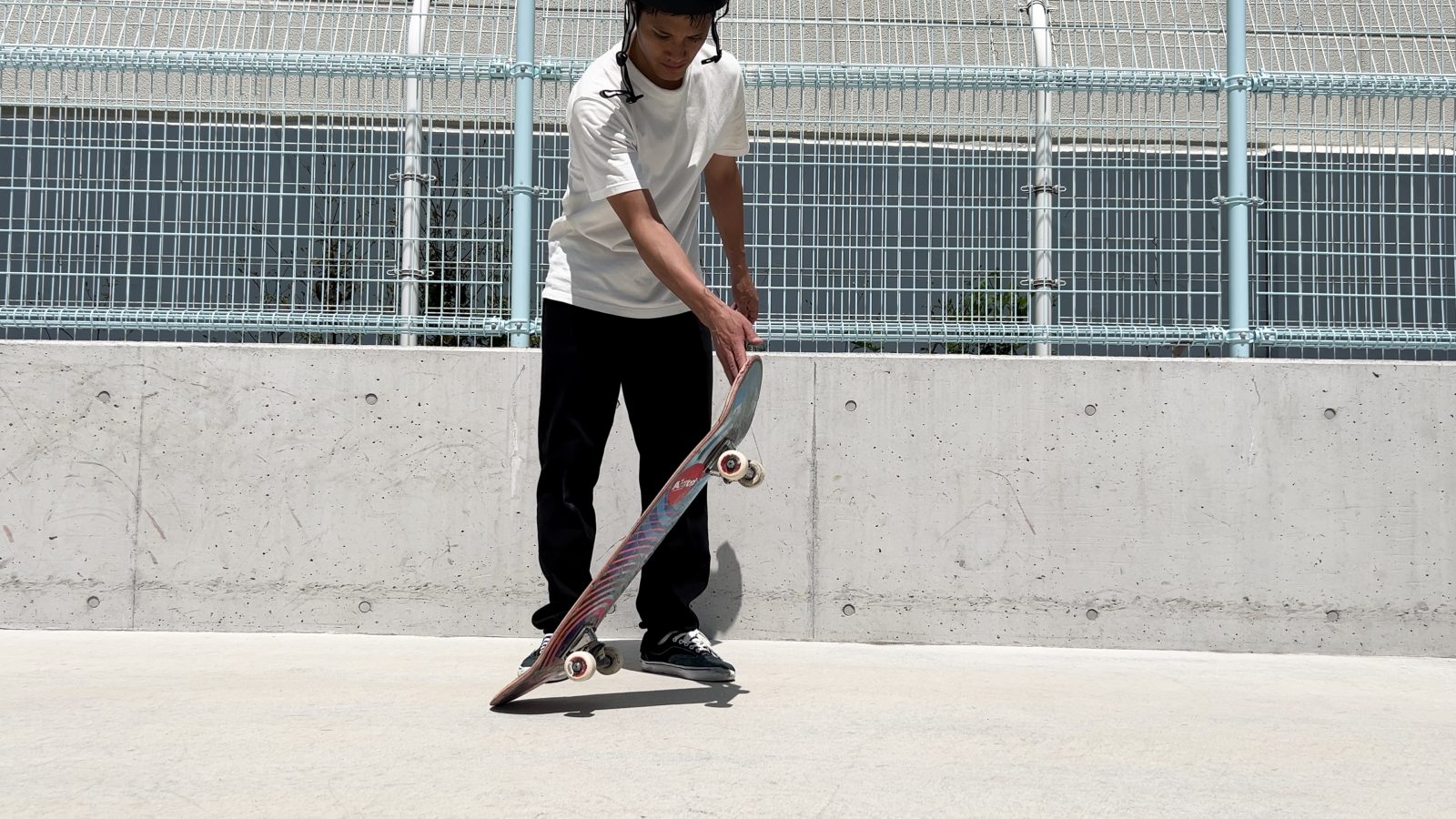If you're having trouble getting your Ollie higher, FORGET about practicing sliding your front foot against the board. The reason behind it is hidden in a secret movement technique once used by ancient Japanese assassins.
In this article, we will analyze how the use of the front foot in an Ollie shares common points with classical martial arts and examine it from the perspectives of biomechanics and physics to uncover what it takes to achieve higher Ollies.
Summary
Misunderstanding the Slide: Why Vertical Lifting Matters
In Ollie practice, many focus on sliding the front foot up the board. However, this can backfire, especially for higher Ollies. In reality, lifting the front foot vertically is far more important. The board naturally pushes back against the foot as it rises. If you rely too much on sliding, your body leans forward, weakening the crucial upward force. Intentional sliding practice does not reflect the proper technique for real Ollies.
Ninja Logic and Ollie Mistakes: Leaning Kills Height
Just like the Ninja technique "Shukuchi," focusing too much on smooth, forward movement can reduce Ollie height. When you consciously slide the front foot, your body tends to lean forward, while the back foot kicks backward. This weakens the vertical force needed for height and often causes the back foot to separate from the tail. To gain height, vertical lifting is essential.
Mastering the Timing: Press the Nose While Rising
The most critical part of an Ollie is pressing down the nose while the board is still rising. At this moment, the center of mass continues to ascend while the nose drops, making the board rotate and the tail lift. Pressing too late causes the board to lose force and fall. To master this, relax your front foot and focus on lifting it vertically first, then press down at the right time.
Common Myth
It is true - Sliding up the front foot seems like a key part of an Ollie. If you watch an Ollie in slow motion, the front foot clearly slides against the board. The reason why you should not focus too much on practicing the sliding motion of your front foot is because the way you use your front foot in this practice is different from how you use it in a real Ollie. Especially when you go for higher Ollies, the front foot lifts more vertically compared to the sliding practice.
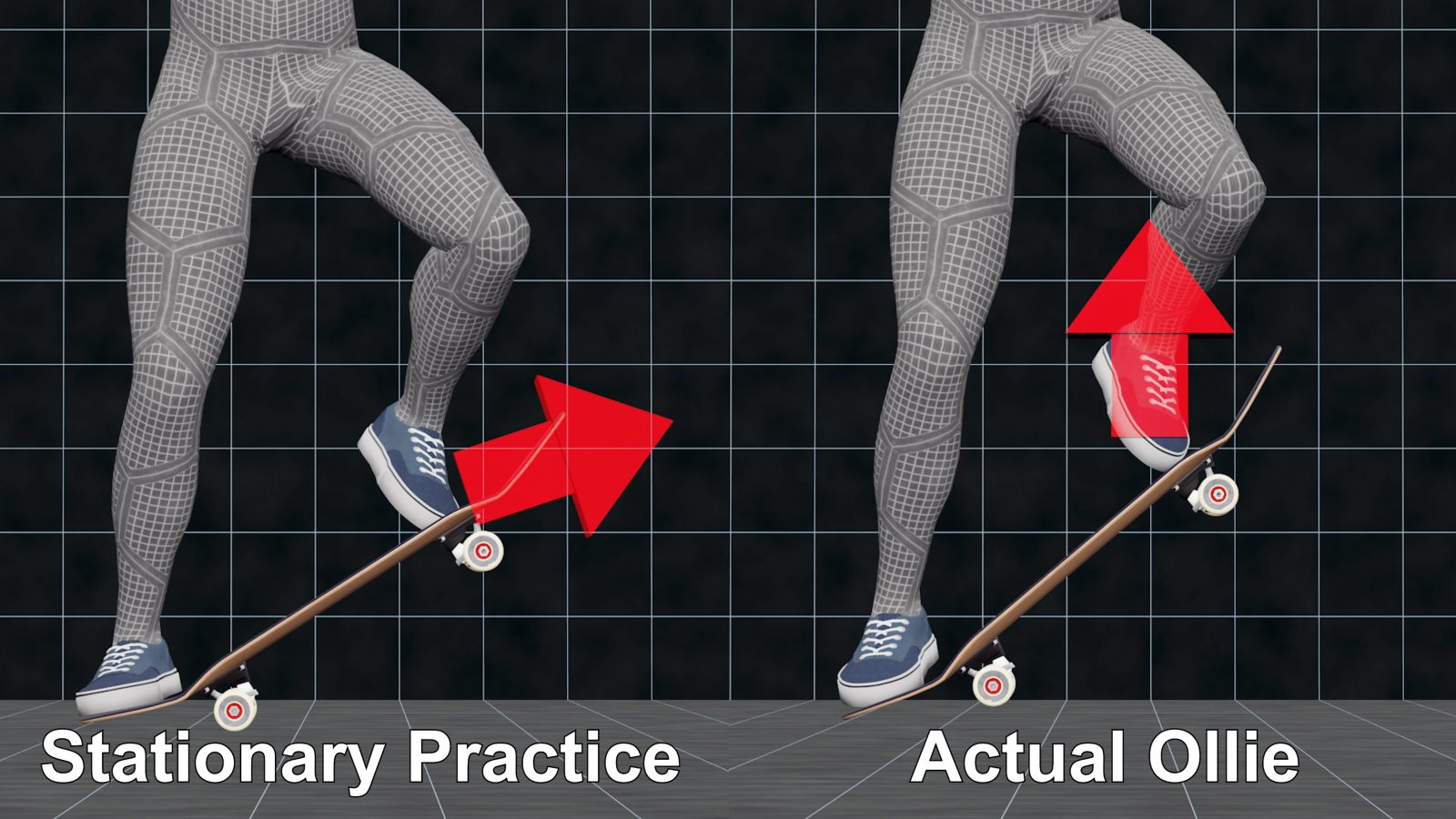
If you raise the board's angle more steeply, it would more accurately reflect the feeling of an actual Ollie. However, this method is still not accurate enough. And that's because it is missing a vital point: which pushes which — the board or the front foot? It's actually the board that pushes the front foot.
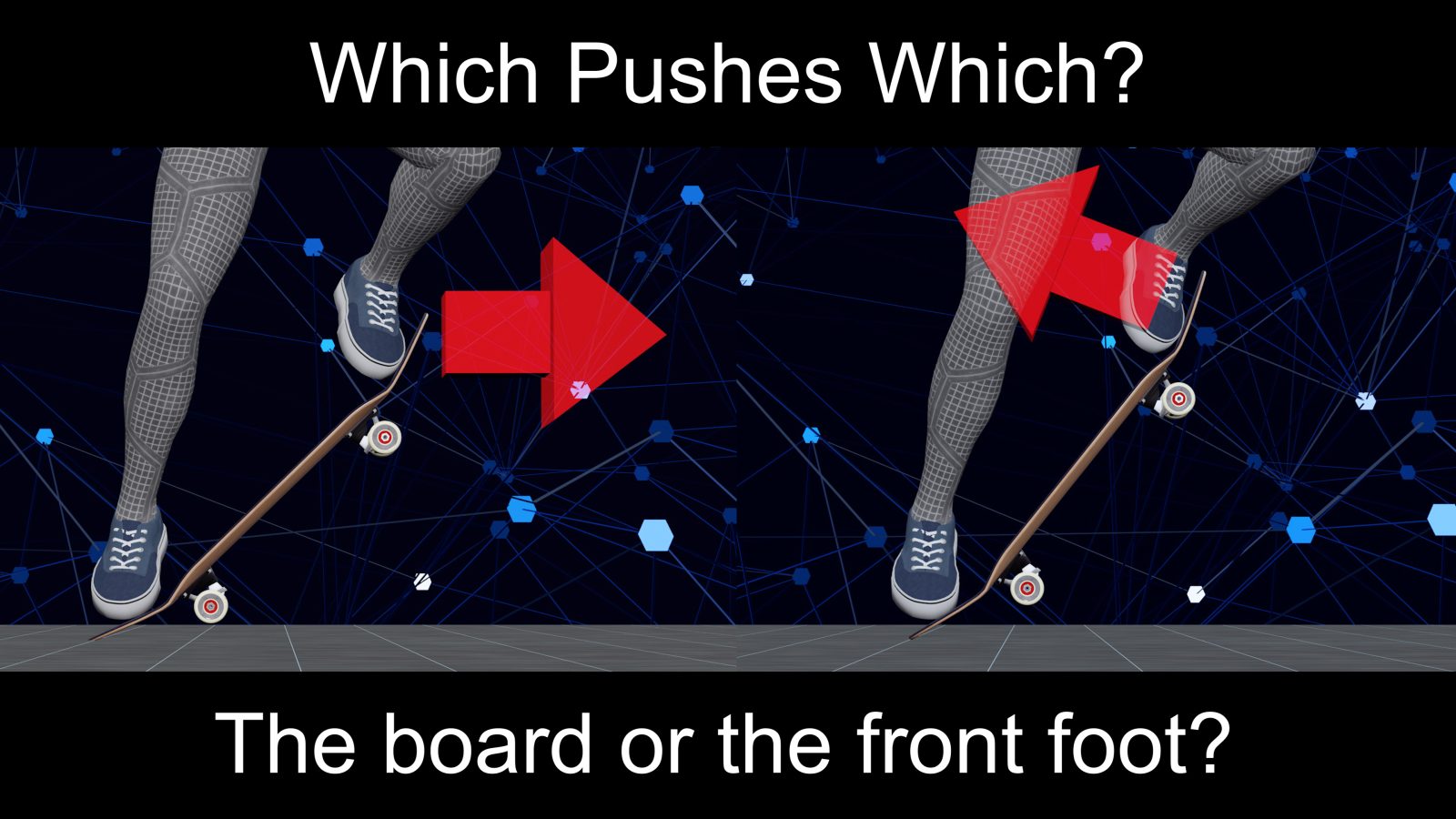
The role of the front foot
The board lifts if you pop the tail and simply lift your front foot vertically and let the board push against your front foot instead of actively pushing your front foot against it.
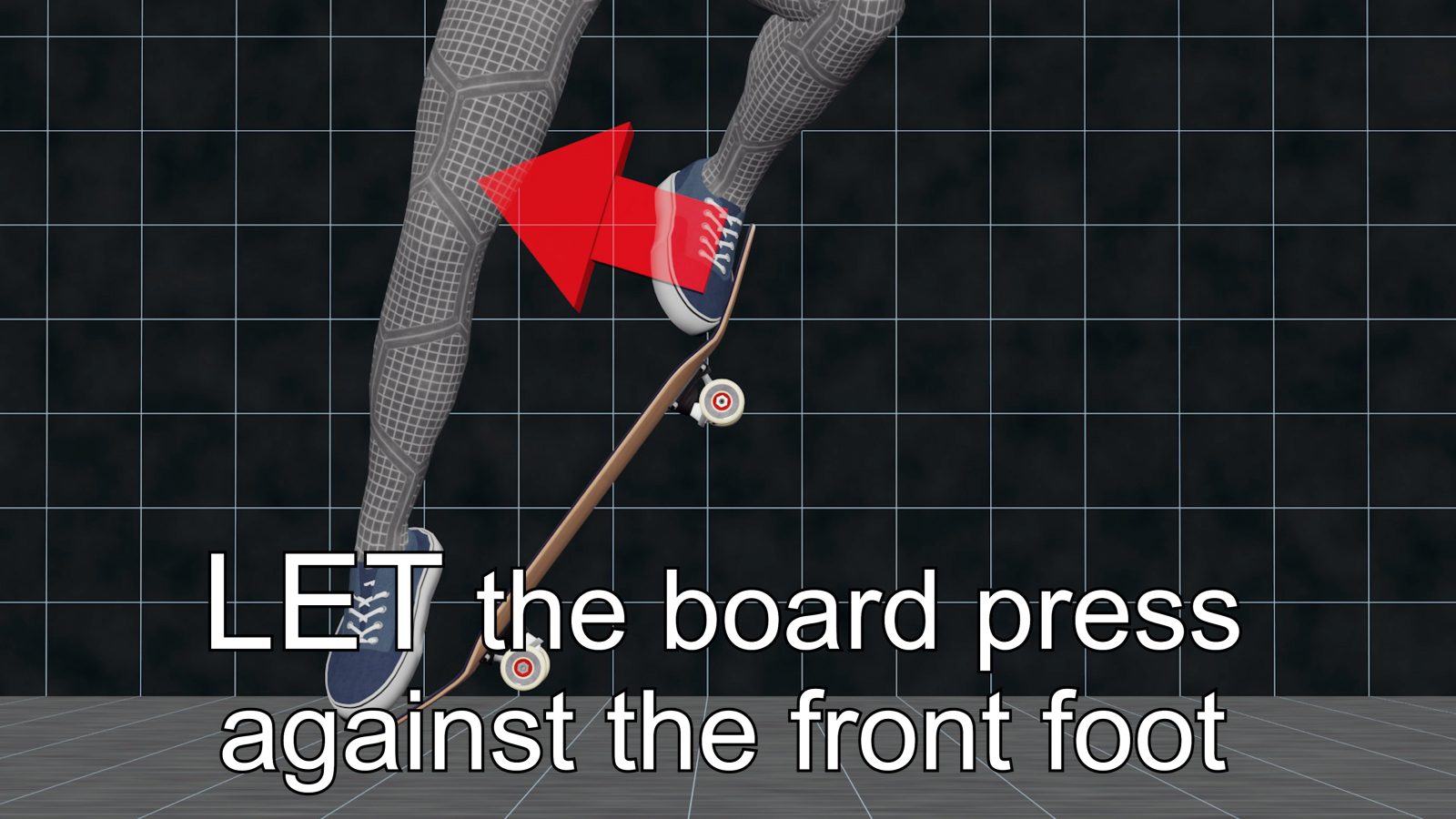
The role of the front foot is to use the friction created when the board pushes back against it to lift the board upward. As evidence, if you look at the yellow line visualizing the trajectory of the front foot, you can see that it does not move any further forward beyond this line and instead lifts straight upward.
Lately, I've gotten tons of questions on Instagram and X. I've noticed a common theme: many people, probably influenced by old tutorial videos, are trying too hard to intentionally slide their front foot up the board. So, what's the problem with it? In order to understand that, we need to look at something that might seem irrelevant: the movement of ancient Japanese assassins—yes, Ninjas.
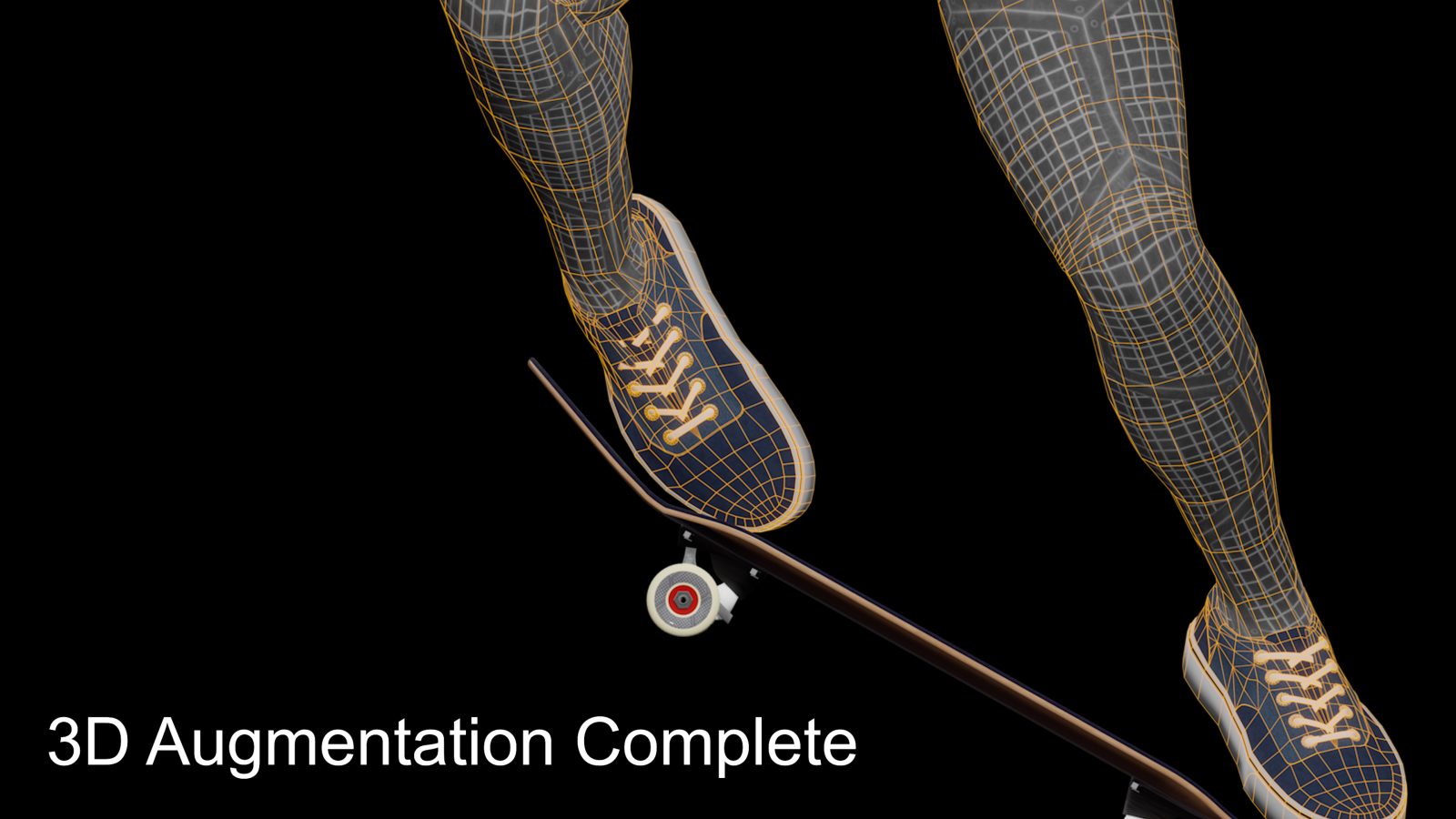
Ninja's walking method
Ninjas were specially trained warriors who carried out covert missions. Their missions were to eliminate their targets by taking the shortest route possible—without being noticed by anyone. To achieve this, they developed a unique form of movement known as Shukuchi. The term literally translates from Japanese as "shrinking the ground."

Imagine your target is right in front of you. And you only have one move to take him down. What would you do in that situation? Some of you might instinctively want to jump forward—but the moment you jump, your body leaves the ground, creating vulnerability in your movement, which, in a life-or-death situation, is fatal.
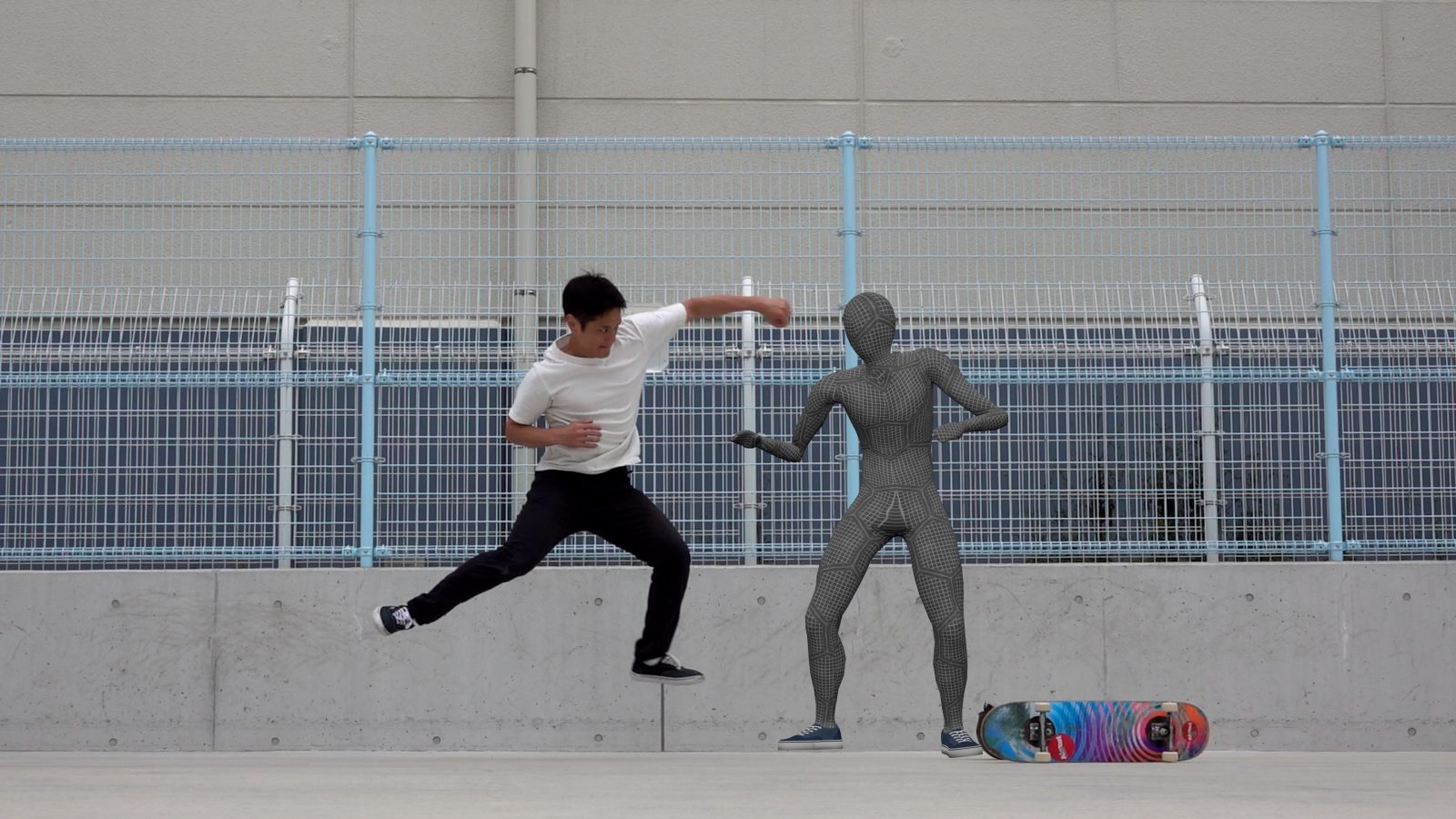
So the Ninjas asked themselves: "How can we close the distance in the shortest possible time?" The answer they arrived at was this: They released the pressure from the leg supporting their center of gravity, allowing their body to fall forward. Then, using that forward momentum, they pushed off the ground with their back foot. By doing this, they could minimize unnecessary vertical movement and instead generate maximum horizontal force.
The common factor between Ninja and low Ollies
You must have seen it somewhere before. Yes, it's exactly what happens when you "slide your front foot in your Ollie." When you consciously slide the board with your front foot, your body tends to lean forward. As a result, you will lose the upward, vertical force that's essential to gain height in your Ollie.
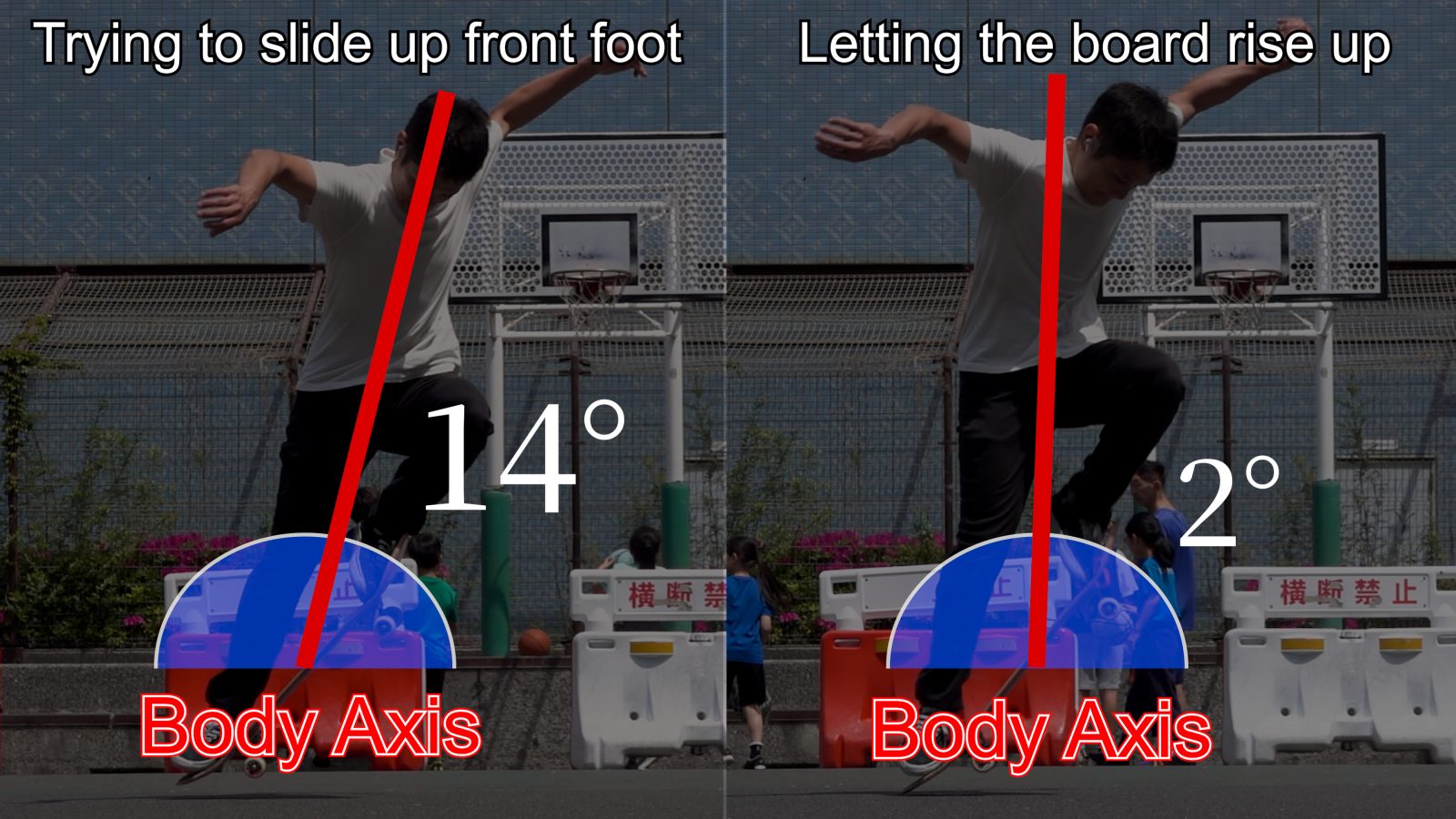
Let's also take a closer look at the behavior of the back foot. As you try to slide up your front foot, your body leans forward, and your back foot kicks out backward in the opposite direction of travel. The force that lifts your body is generated by extending your body after crouching. It reaches its maximum when you fully extend your back leg and pop the tail. However, the more diagonally you pop, the weaker the vertical component becomes, and the weaker the rebound from the ground that lifts the body.
Plus, the force of the nose to rise already includes a component that pushes back against the front foot. By popping the tail while pulling it backward too strongly, the board pushes back the front foot even more strongly in the horizontal direction. If you try to push your front foot forward against this force, those two forces just offset against each other, and no upward force to lift the board is generated.
If your back foot separates from the tail during an Ollie, it is often due to this mechanism. When the front foot presses against the board, there's no force left for the board to lift any higher, causing it to descend due to gravity. In contrast, the back foot continues to rise, resulting in separation between the foot and the tail.
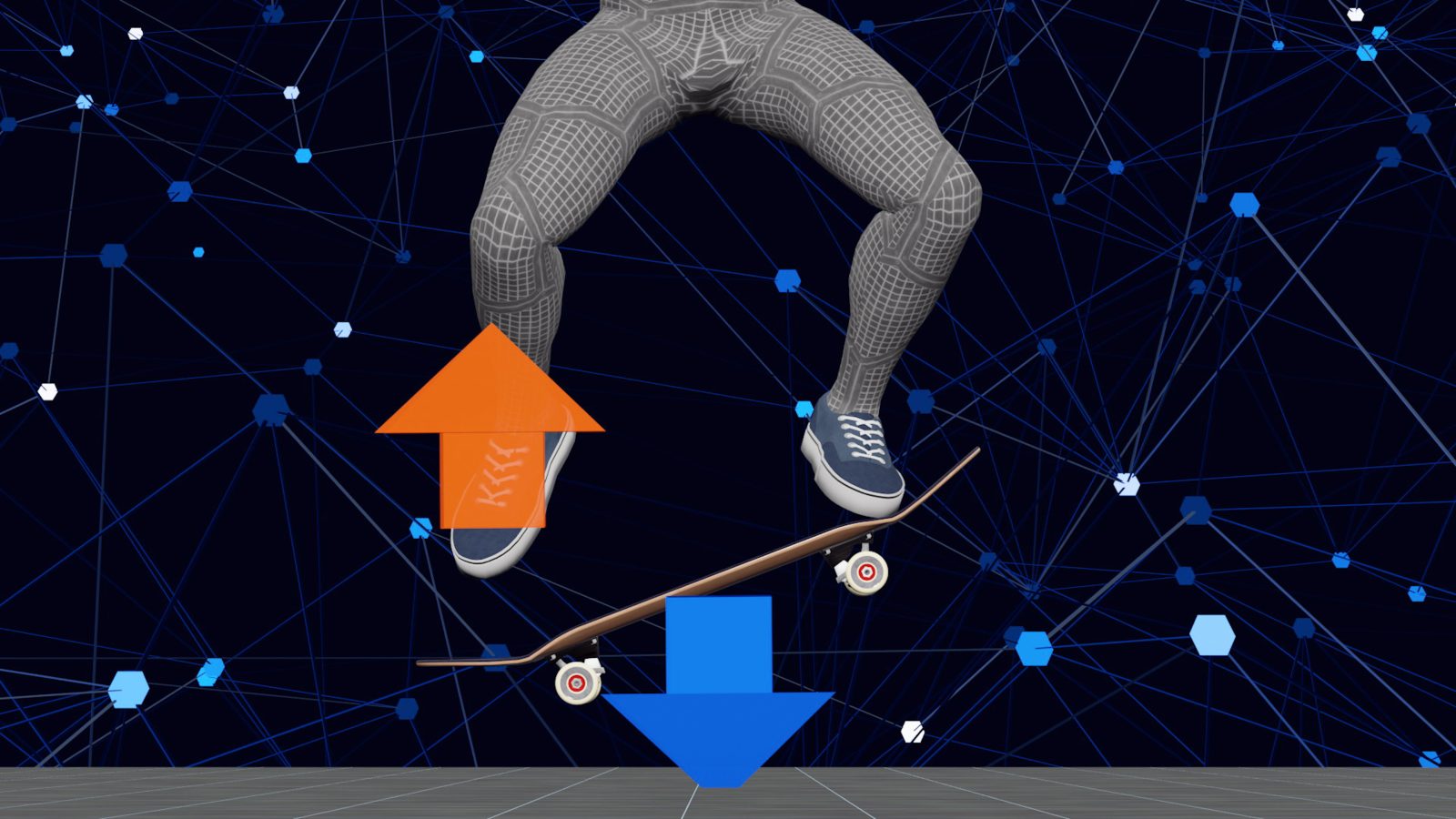
Practice steps
I recommend practicing Ollies by simply lifting your front foot. Focus on lifting it vertically, and don't worry about doing rocket Ollies. Once you've got this movement down, move on to the next step.
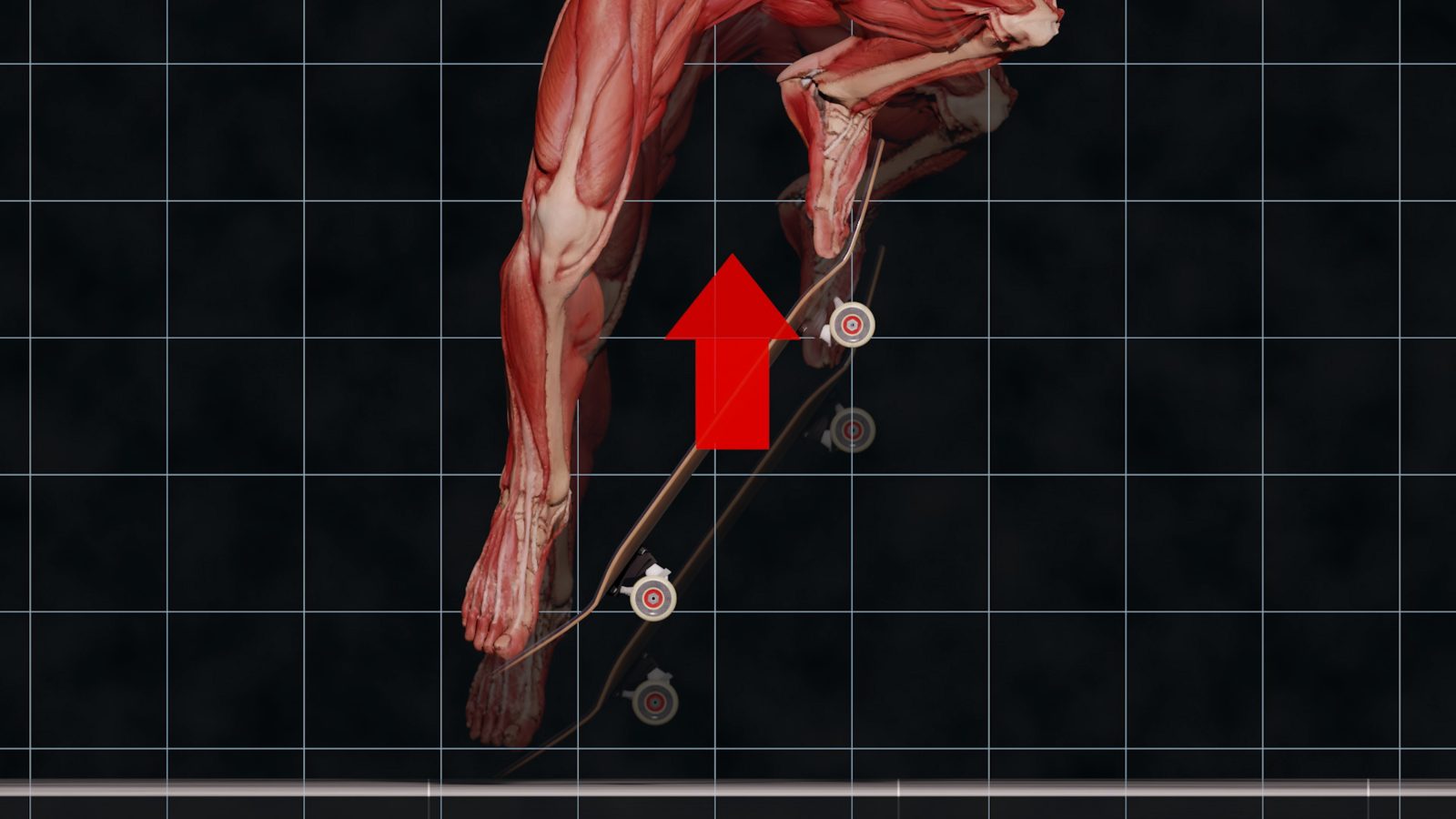
After popping the tail, the nose rises in reaction while pressing your front foot inward. It causes your ankle to roll while creating friction between your front foot and the board. To make it happen, keep your lower leg relaxed. When you lift your front foot in this state, you can create an upward force to bring the board higher.
After lifting the nose, the next step is to press it down with your front foot. To lift the tail, use the upward force generated when you raise your front foot vertically. While this force is active, the skateboard, like any other object, follows a parabolic trajectory as it rises and eventually begins to descend. What is important here is to press down on the nose while the board still has upward momentum. By doing this, the board's center of mass continues to rise while the nose drops, causing the board to rotate around its center of mass and lift the tail.
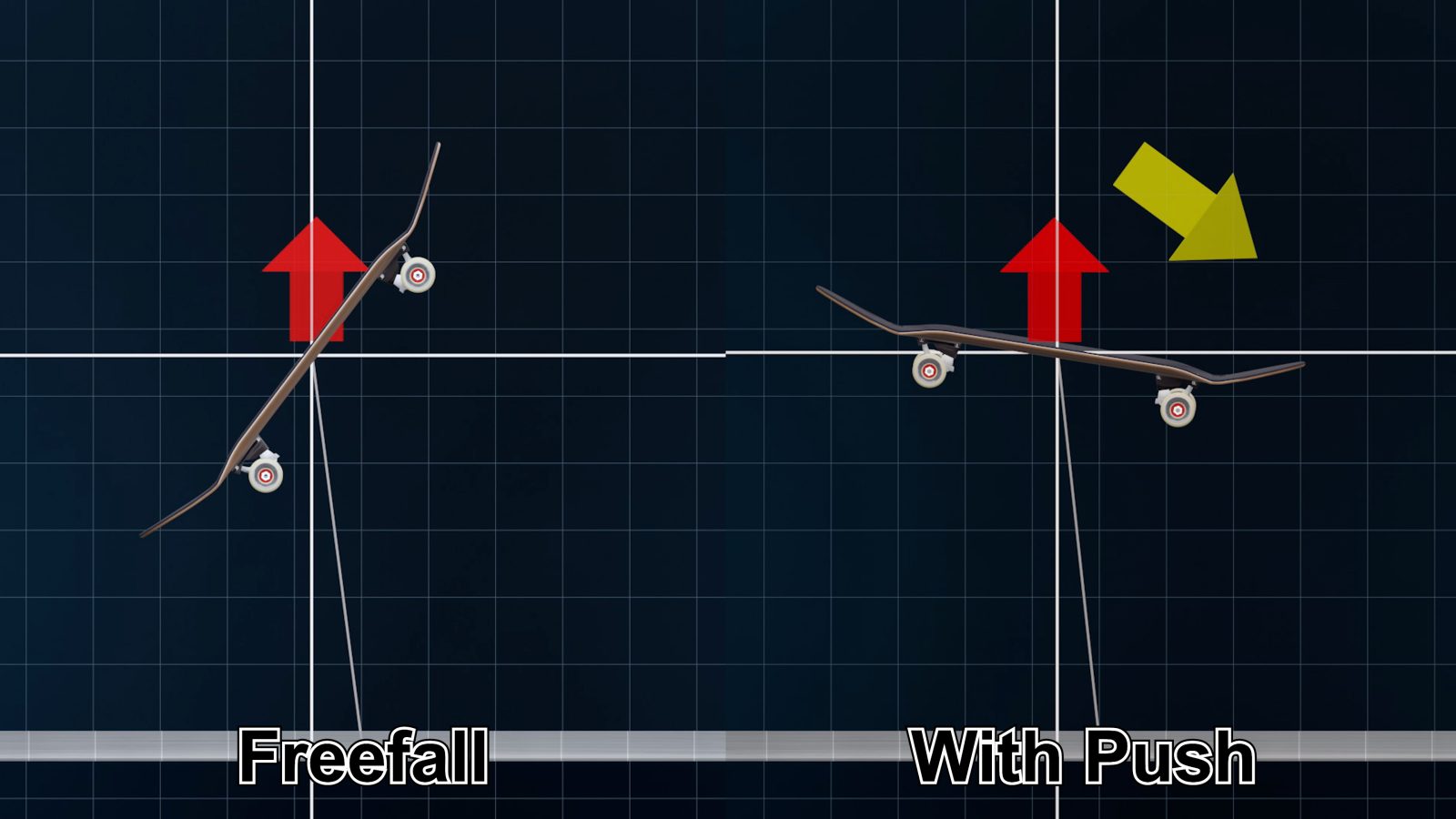
On the other hand, if you press the nose too late, the board starts to decent. And even if you press it down, there's no force left for the board to lift the tail anymore.
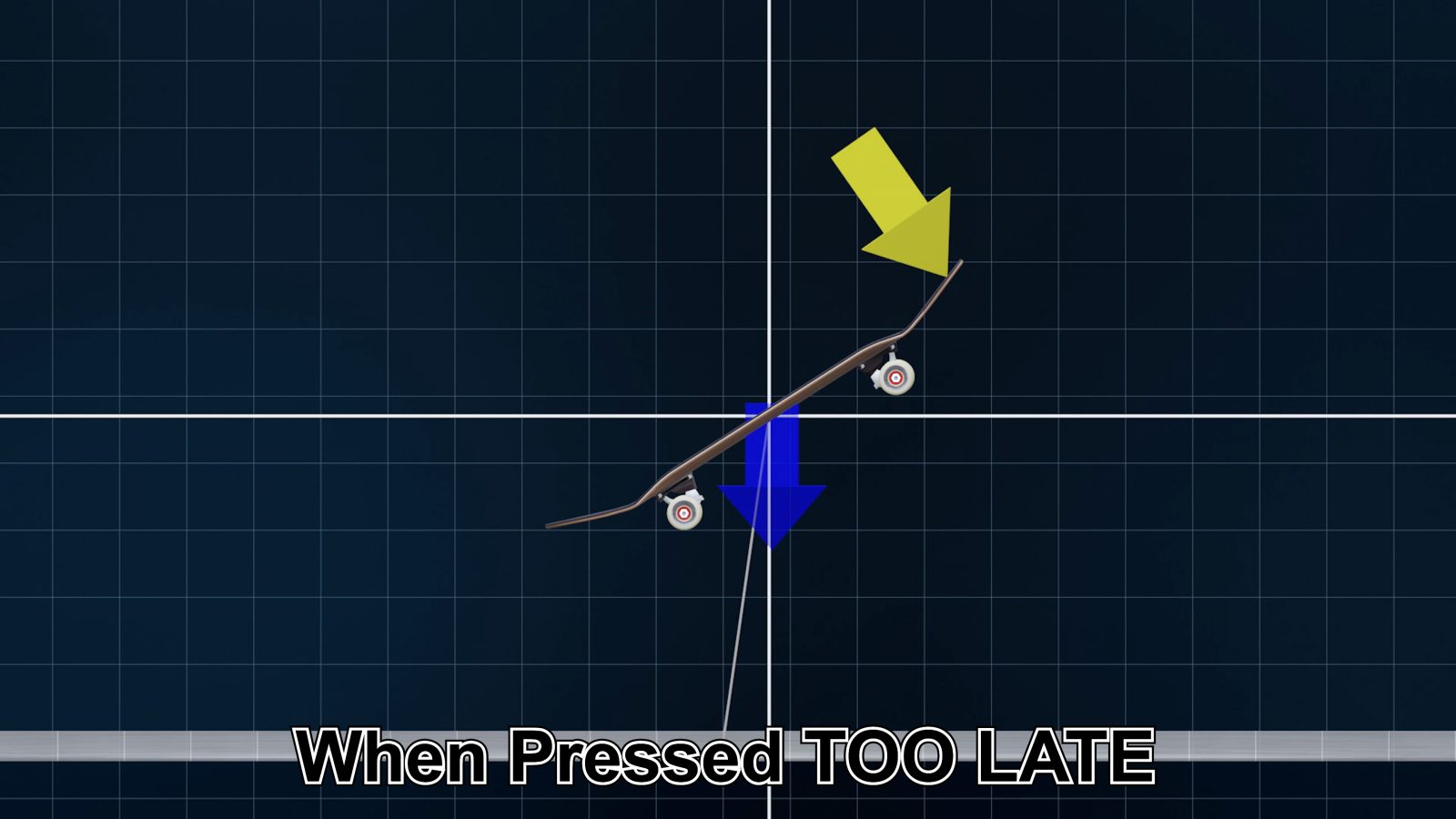
This is just like pressing on the nose when the board is about to fall. It won't lift the tail. Please check out the previous video for more about this mechanism.
